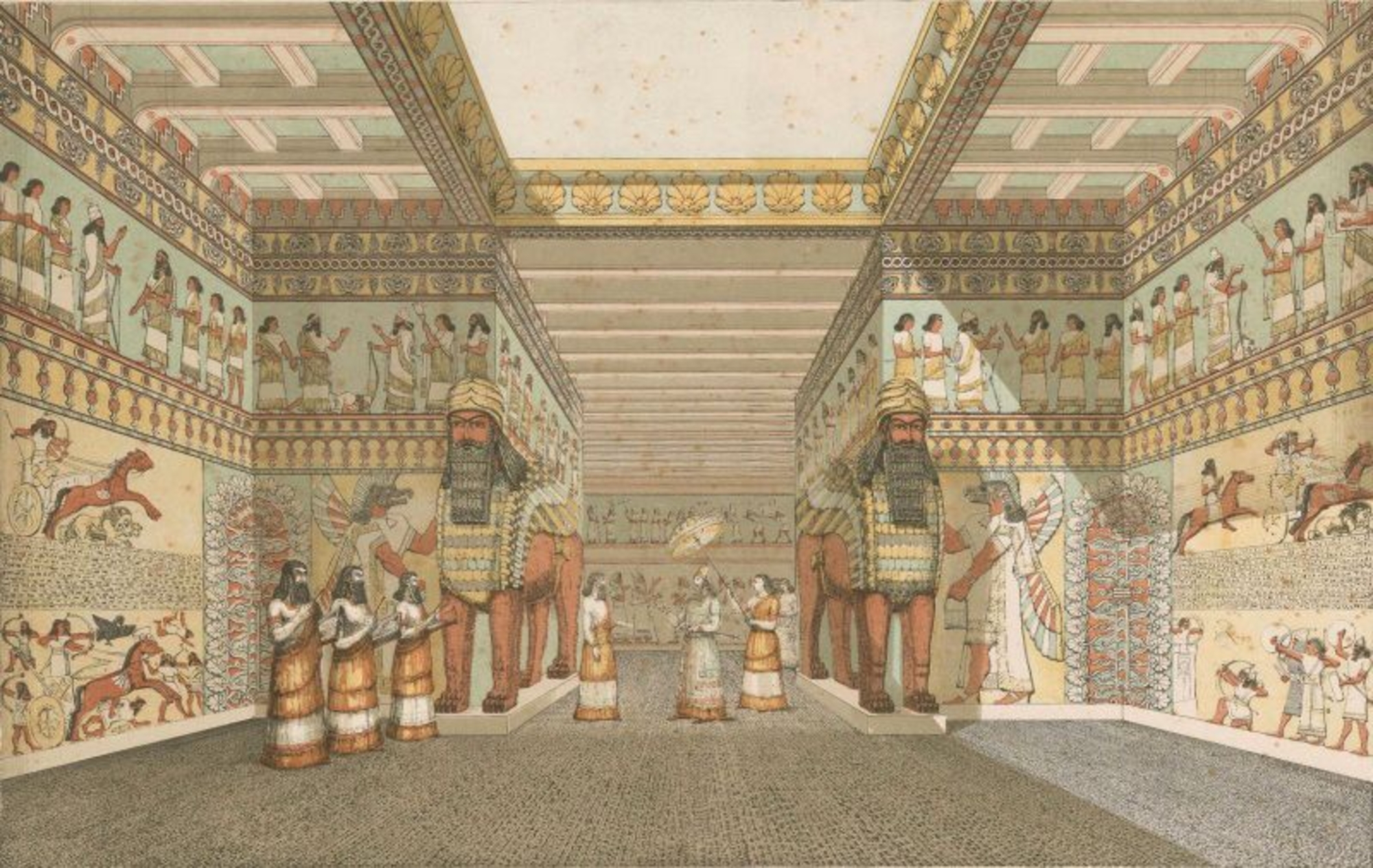
- Home
- The luxury of an Assyrian palace
- Life at court
- Furniture
The palace furniture was richly decorated as shown in the relief of Sargon in which his servants are carrying a table and a matching stool to the king. Probably made from precious wood, this furniture is also found on the Nineveh banquet relief in the British Museum, where the queen is seated on a throne and King Ashurbanipal is lying on a luxurious bed. The furniture depicted in the Khorsabad reliefs is very similar to the Nineveh banqueting table. The thrones, tables, and seats have scrolled uprights. They are decorated with lion's paws and feet in the shape of cedar cones.
Inlays
Fragments found in the residences of Khorsabad suggest these decorations may have been made from ivory. Similar fragments have also been found in Nimrud and in the provincial palace of Arslan Tash. The plaques depicting female heads, genii, animals, and Egyptian-style scenes were probably furniture inlays for wooden tables, seats or beds. Some ivories themselves bear traces of paint, semi-precious stone inlays and gilding.
Textiles
Although no direct evidence has survived of the textiles which may have decorated the palace in Sargon's time, Assyrian reliefs depict bed sheets and furniture covered with fabrics. The floors and walls would have been decorated with rugs, as suggested by a relief in the Oriental Institute, found on a threshold of Residence L. More than threes metres long, it features a design representing a carpet embroidered with floral and plant motifs. The Louvre has a similar relief from Nineveh with a geometric decoration composed of rosettes, flowers, and a plant border.


